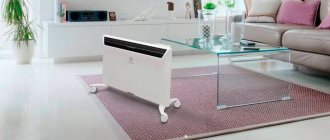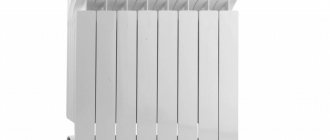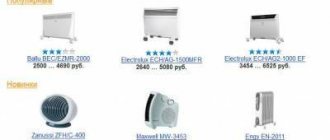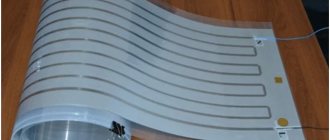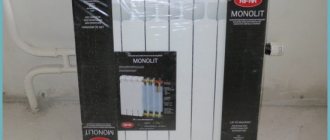- Pros of IR heating
How does infrared heating work?
The problem of the need to save energy resources, which has become most acute today, has led to an active search for alternative energy sources. One of the options for solving this problem in the field of space heating has become infrared heating, reviews of which raise a lot of controversy and questions. This is due to a lack of understanding of the essence of the process that occurs when using it. The main feature of this type of heating is the minimum energy consumption to power infrared heaters with its high efficiency. The very principle of infrared heating is based on heating objects, which in turn give off the resulting heat to the air around them.
Infrared heaters and convective heating: operating principle
What is the difference between heating a room with an infrared ceiling heater and heating with convectors?
With convective heating, warm air, which is heated by interaction with the device, rushes upward, and cold air takes its place. Thus, the air higher up towards the ceiling is much warmer than near the floor. Accordingly, no convector can heat a room instantly; for this it will take time, since the air in the near-ceiling area must heat up first.
The case with infrared heaters is exactly the opposite. With such heating of the room, on the contrary, it will be warmer below than above, and closer to the ceiling the air temperature decreases, which, in fact, is an undoubted advantage of infrared heating. How do infrared heaters work? These devices do not heat the air at all; their action is directed at objects in the room, as well as at the walls and ceiling: absorbing infrared rays, they heat up.
The principle of operation of the system is compared to the operation of the sun: the infrared waves that heat the room correspond to the range of radiant energy of the luminary. Consequently, heat is felt immediately after turning on the heater, although not in the entire room, but of a local nature, that is, in that very place of radiation.
Scope of application
Depending on the design, infrared heaters are used for the following purposes:
- low-temperature panels act as local heaters in living rooms or serve as a supplement to the main heating;
- devices with an average surface temperature of over 100 °C are capable of heating residential and office premises independently;
- To warm up production areas, high-temperature radiant heaters are used, located at a certain distance from workers (for example, suspended from the ceiling).
Directional radiant heat has been successfully used in residential buildings, offices and businesses
Diesel and gas heaters are widely used for heating greenhouses, hangars, garages and other industrial premises. There are compact models that run on liquefied propane and are designed for spot heating right on the street. Inside residential buildings, the use of such devices is limited - it is allowed to use modifications equipped with pipes for exhausting flue gases to the street.
IR heating elements are used not only for heating buildings. For example, they are used in medical equipment (quartz lamps for disinfecting rooms), the production of infrared saunas and so-called heating furniture.
The use of radiant heat allows you to quickly warm up your home mini-sauna
Choosing an infrared heater: what is important to know
What should you consider when choosing a ceiling infrared heater?
- Firstly, it is important to decide whether this type of heater will be used as a basic one or will its function only be additional heating of the room? That is, before making a choice, you need to take into account the purpose of using the device and the intensity of its work.
- Secondly, it is advisable to take into account the technical characteristics of the room for which the device is selected. For example, you need to pay attention to the walls (how thick are they, are they insulated from the outside), the ceiling (there is an apartment or roof on top (if there is a roof, then what condition is it in and what is the quality of insulation); windows (what kind of windows are in the room, how tightly the glass is in contact with the frame), etc. The combination of these factors has a direct impact on the heat loss of the room, therefore, these characteristics determine the choice of heater.
- Thirdly, it is important to decide which manufacturer’s product will be the best. As a rule, they choose a product from the brand that has proven itself to be the best and where the price corresponds to the quality. Advice from friends and acquaintances regarding this or that brand can also help in resolving the issue. And, of course, no one excluded reviews about the product on the Internet. They may not create a complete picture, but they will give a general idea.
Domestic brand IR heaters
Speaking about infrared heaters, one cannot fail to mention the domestic brand “Peony”. If you believe the advertising, this technique is high class. It has a fundamentally new design: the dispersion angle of long waves is greater than that of most brands from other manufacturers. In addition, “Peony” is fireproof and does not make unnecessary noise, which is the problem with many infrared heaters. Infrared radiation plates of this brand are quite reliable and, as the manufacturer assures, have a longer service life than other brands. In addition, Peony has an exquisite design and is relatively inexpensive.
To consider installing a ceiling infrared heater, you can use this brand as an example.
Comparison table of characteristics
In the table, we have compared the technical characteristics of the presented electric heaters so that you can easily compare and, perhaps, choose among them your future savior from the cold.
| Model | Heating Power (W) | Heated area (m²) | Number of operating modes | Warranty period (year) | Model weight (kg) | Device dimensions (cm) | Cost (rubles) |
| Nikaten NT 300 | 300 | 6 | 1 | 5 | 11 | 60×40×4 | from 2,980 to 3,440 |
| Ballu BIH-APL-0.6 | 600 | 6 | 1 | 2 | 2,2 | 88,5×4×13 | from 1,613 to 2,738 |
| Hintek IW-03 | 300 | 6 | 1 | 1 | 3,3 | 70×40×5 | from 2,477 to 2,986 |
| Hyundai H-HC3-06-UI999 | 600 | 10 | 2 | 1 | 0,76 | 32×23,5×8,7 | from 572 to 990 |
| Ballu BIH-S2-0.3 | 300 | 6 | 1 | 5 | 3,4 | 59×59×3,5 | from 1,722 to 3,488 |
| Bagan REN-5 | 500 | 15-20 | 1 | 5 | 1 | 80×60 | from 1,990 to 3,890 |
| KALASHNIKOV KIRH-E10P-11 | 1000 | 20 | 1 | 3 | 3,4 | 136×13×4,5 | from 2,650 to 3,200 |
| Ballu BIH-LM-1.5 | 1500 | 25 | 3 | 2 | 3,5 | 35×46×31,5 | from 2,390 to 4,879 |
| Peony Thermoglass Ceramic-10 | 1000 | 20 | 1 | 3 | 4,,6 | 80,5×29,5×1 | from 5,550 to 5,850 |
| Ballu BHH/M-10 | 800 | 14 | 2 | 1 | 0,9 | 37×30,5×13,6 | from 961 to 1,623 |
Installation of a ceiling infrared heater (using the example of the Peony brand)
There are several simple rules that should not be forgotten when installing a ceiling infrared heater:
- Safe fastening is the first prerequisite. It must hold the device securely and not deform.
- It is best to install the heater using the fasteners that come with the device.
- The heating surface of the device must not come into contact with materials that may ignite.
- Wires must be insulated for safety reasons.
What is included in the “Peony” ceiling infrared heater kit? Actually, the heater itself, installation kit, operating instructions, warranty. Thermostats must be purchased separately.
What is a heater? This is a device about half a meter long under the ceiling, to some extent resembles a lamp, but does not glow. Only a small light is on while the device is operating, but if it is turned off, the device, accordingly, does not work - it’s like an indicator.
The manufacturer assures that even an inexperienced beginner can install the heater. The hooks are screwed to the ceiling, chains are hung on them, and there is a groove on the heater where these chains need to be inserted. The user can adjust the size of the chain at his own discretion. Of course, if the ceiling is wooden or suspended, installing the device will be easier than if the ceiling is concrete and the ceiling will have to be drilled. However, the hangers are generally quite easy to install. The wires are secured using a terminal box, which is covered with a protective casing.
Thermostats that can be used in conjunction with a heater can be mechanical or electrical. There are no questions with mechanical regulators: you just need to set a certain temperature. The situation with electric ones is more interesting: they can be programmed, for example, for a week. Some electric thermostats allow you to set only basic parameters. Others can be reprogrammed entirely according to the user's wishes. Although such thermostats are used quite rarely, and this is not only due to possible difficulties in setting them up. The price category of electric thermostats scares off even connoisseurs of their enormous capabilities.
The infrared heater also provides the ability to use a thermostat (although it is not included). This creates additional convenience for the user: the heater will not work 24 hours a day. The thermostat will turn on the heater when needed.
Plen in a country house
Another option for infrared heating is film electric heaters, which are used in frame houses and are installed in the form of a film around the perimeter of the ceiling.
They are also suitable for floor installation: they contain no flammable materials.
For correct operation of film infrared heaters, a stable voltage is required. In holiday villages or small villages it can drop to 150-160 V, especially in severe frosts, when additional heat sources are connected everywhere. Heaters will be able to warm up your home even in such conditions, which will take more time. The film should heat the room and turn off until the air temperature drops, operating in maintenance mode. At low voltage, it will constantly consume current, which will negatively affect your electricity bills. For Plen to work properly, they require at least a stable 200 V.
When installing films, you need to act wisely and separate electrical appliances by phase. The best option is when three phases and 380 V are supplied to the house. Heating is installed on one phase, lighting on the second, and other electrical appliances on the third. In this case, overloads, short circuits and other unpleasant consequences will not occur.
Infrared heaters distribute radiant energy: walls, floors, furniture will be warm during their operation, but closed spaces will remain unheated. If the corners of a frame house are filled with furniture, it will be cold in them. The windows are transparent, they allow the rays of heat to pass through and also avoid warming up, which is noticeable in cold weather.
The operating principle of an infrared heater can be found here:
Even for an insulated frame house, infrared heaters are not enough. An additional heating system is needed, for example gas. Firstly, it will power the radiators, which turned out to be necessary for banal comfort near the windows. Secondly, in rural areas and dachas, power outages are a constant occurrence, and insurance will not be superfluous.
Rules for using an infrared ceiling heater
In fact, caring for ceiling heaters is very basic: all you need is to periodically wipe them from dust.
Infrared rays are not harmful to the human body, some even claim that they have a positive effect on health. However, it is not recommended to stay in direct light for long periods of time. Since the principle of operation of an infrared heater is similar to the operation of the sun, if you stay under the “artificial sun” for a long time, you can quite reasonably get a heat stroke. Accordingly, you should not use very powerful devices in a room with a small square footage. It is important to adhere to the following rule: it is better to have more infrared heaters with low power than one with high power.
Ceiling short-wave heaters are also not recommended: short waves can penetrate the body and be harmful to health.
Heating control systems
In the budget configuration, infrared heaters of all types are equipped with adjustment of heating power and maximum room temperature. When it reaches the set value, the thermostat turns off the heating elements. Floor-standing models are additionally equipped with a safety sensor that turns off the device in the event of a tipover.
Panel and individual modifications of lamp heaters can be combined into groups controlled by an external thermostat and a common temperature sensor. Film infrared heating elements are also controlled in this way, since they are not equipped with their own automatic safety system.
It is better to control the ceiling model from a remote thermostat
Manufacturers provide the following additional functions in the devices:
- programming the heating time and temperature for 1 day or a week in advance;
- LCD display;
- Digital Watch;
- remote control control;
- remote control from a smartphone via the built-in GSM module.
Customer Reviews
MAXIM s.
Ballu BIH-LW2-1.5
We bought it for a country house, for the off-season as an addition to the stove heating. As a result, before the purchase, we were sitting in the kitchen wearing UGG boots and our feet were freezing, given the uninsulated floors and drafts. The installation allowed me to sit in slippers, my feet stopped freezing. The only thing is that during installation, we took into account the place where we are most of the time, and determined the place for installation in such a way that the radiation would overlap this zone. In fact, we use it to heat one room of 18 m2, in other rooms there are stoves, in the autumn months it is heated once in the evening, and the heater runs at half power all day in the kitchen. During winter visits, the heater operates mostly at full power, and at half power during heating.
Nina S.
Timberk TCH AR7 1000
We installed such a heater in our country house a year ago, and it was a big help in winter. But it is only suitable for small rooms; the power to heat large ones is not enough. This requires a thermostat, but otherwise it’s a very good washer. It works quite a lot, heats the room in a few minutes. We chose this model because of its affordable price and ceiling mounting: this way you can save space (in the country the rooms are small), and the heat flows more evenly.
Lesha N.
Almac IK11
My brother and I decided to make life easier for our elderly at least somehow. They don’t want to go to the city, and they no longer have the strength to watch them heat the stove. We prepared for this winter; we took our parents two Almak IK-11 heaters, and for them simple and understandable thermostats from the same manufacturer, model IMA. The display always shows the air temperature in the room in large numbers. There is an indication of operation: if the heater is turned on, then the manufacturer’s green logo is additionally displayed and it is clear that it is working. But this is not so important because and you can feel the warmth from the heater when it turns on. Using the buttons you can add or lower the desired temperature. One was placed in the bedroom, the other in the passage between the living room and the kitchen. Warm air spreads out in all directions. In general, we are happy so far, we are waiting for winter. I hope there will be no problems, the heaters are modern, they turn off themselves when the room is heated. Then they turn on themselves again. This will greatly simplify life for parents, they will be warm and will not need to light the stove so often.
Vasilisa R.
Hyundai H-HC2-10-UI690
I work as a relocation attendant. We got together with the girls from other shifts and bought this heater. We installed it at a height of 2.70. We warm ourselves with it mainly at night. Silent, does not emit foreign odors. The room feels warm after just 20 minutes of heater operation. For our small duty room, just what we need. It doesn’t burn up oxygen, and after a 12-hour shift there’s no headache. High-quality assembly from quality materials, I disassembled it at home after purchase. The case is metal, durable, not tin, good thick foil, thermal insulation made of stone wool, there are no questions about the terminal compartment, the wiring is reliable. When I first turned it on, there was no crackling sound or smell of burnt dust, the heat came right away. I installed it on the standard ceiling mounts, it works as it should, I plan to install a thermostat to maintain a constant temperature and be more economical.
Leonid Efimov
RESANTA IKO-800L
For a long time we asked the owner to replace our old heater in the warehouse, in the service room, where we spend almost the entire working day. When we finally received the Resant quartz device, we didn’t understand the humor at all. Small, you can see from the plastic of the case that it’s cheap. My partner and I perked up a bit only when we immediately felt warm after switching on. Later we learned that it is undesirable to be constantly exposed to infrared rays. Therefore, we periodically turn it off, and so that the temperature does not drop quickly, we adapt a black stone slab, which heats up and releases heat gradually.
Catherine goose
Ballu BIH-LM-1.5
I bought it for work because small radiators in a spacious room cannot cope with heating. I took it to replace the oil one at 1900W (stupid things in large rooms), this one at 1500 does a much better job. There is, of course, a nuance: infrared heats up all objects around it, and it heats up well)). You must select the installation location very carefully and, in the absence of timers and a thermostat, do not forget to turn it off. I’m still happy, it copes with the task!
Ilona V.
Almac IK16
The Almak Ik16 heater was selected for us by an online store consultant. We chose a good store, without intermediaries, official. They only told us the parameters of the room and that’s it, they still chose the color. Installed in the women's locker room of the fitness club, centrally on the ceiling. The locker room is not small, almost 27 square meters and has a tiled floor, not the warmest room in the club so to speak, but the temperature there needs to be at least 22-24C. There is central heating, but it couldn’t cope last winter, and in the off-season the pipes are generally cold. Now the coach turns it on an hour before the first lesson and everything has time to warm up. So for now it is set to the minimum temperature, in winter it seems to me that it will generally fry. Connected via a compact thermostat, also picked up by the seller. And his box itself is relegated to a place inconspicuous to the eyes of visitors. Well, so that you don’t accidentally press anything, let’s say I absolutely disagree with the fact that the Almak doesn’t heat up. Well, what kind of nonsense is that?) It still warms, it’s a heater and a good heater. Solve the issue with thermal insulation and you will be happy. I have two identical ones, one at home, and the second one in my workshop. No problems with them, no maintenance, just a fairy tale. At home, IK-16 works in tandem with a thermostat, but at work without it. At work I need the maximum, that's why. But at home, yes, at home you don’t need full power, that’s why a thermostat is necessary. and you can set the desired degree, plus it also helps you save money.
Yaroslava K.
Almac IK11
We had a dressing room without any heating. On the advice of neighbors, we installed an Almak IK-11 infrared heater there and realized that this was the easiest way. A thermostat was also connected to it. Now, in cold weather, when flooding the bathhouse, I turn on the heater and set the thermostat to 22C. Now it’s a completely different matter: you undress calmly, you feel a pleasant warmth from the heater and the floor seems to have become warmer. I don’t know how this happens, but it’s a fact! By the way, we also got rid of the dampness; we always had high humidity there. The towels are drying and the washing machine is standing. I really like the result.
Natalya Sh.
Ballu BIH-APL-0.6
Great heaters! Used as the main heating in a house with an area of 40 m². There are 6 heaters installed in the bathroom, kitchen and two rooms. The corridor is unheated. The house is warm and comfortable. They are run through thermostats from the same company. Keep in mind that 0.6 W as the main heating is designed for 6 m²! With the same indications they were established. Everything is fine! Thanks to the manufacturer and Yandex! At the dacha, a hall of 26 m2, I hung 2 pieces. Everyone has their own thermostat. In winter, we spent all weekends and New Year's holidays there. (set the temperature to 20 degrees) shorts and a T-shirt!
Alfred S.
Ballu BIH-AP4-0.6
Your own garden, lots of fruits and berries. The panels were fitted in a special dryer. I use variable direction swivel brackets, 2 pcs. connected to one thermostat, it is convenient to control heating. It’s also good that the heaters quickly switch to temperature settings, you don’t have to wait. There are benefits to everything - they replace solar radiation. The heaters were installed in the upper part of the greenhouse - the light weight does not load the structure and is convenient to adjust on brackets. Connected to the thermostat. We use it as additional heating in cold seasons. Heat reflection heating maintains stable temperature, infrared radiation promotes plant growth.

